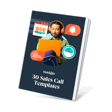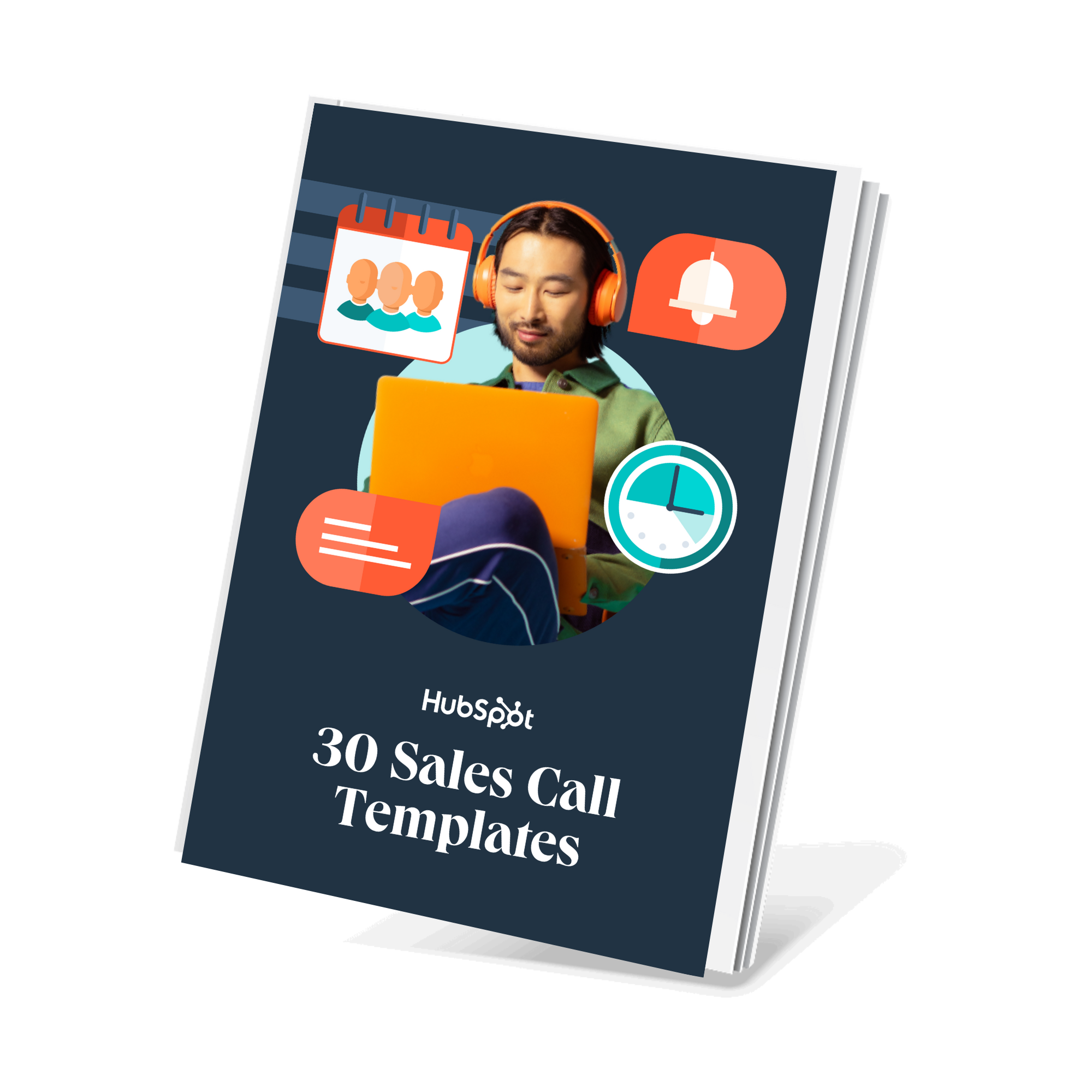It took a lot of missed calls (and ignored voicemails) before I realized there’s a smarter, more human way to do this. I started paying close attention to when people actually answered, experimenting with different times and days, and digging into behavioral data to see what worked.
In this piece, I’m sharing what I wish I’d known sooner: exactly when to call, backed by data and real-world insights, so you can spend less time dialing into the void — and more time closing deals.
Table of Contents
Understanding the Right Time for Cold Calling
It might seem like there’s a magic formula, but figuring out the best time to cold call took me a lot of trial and error. When I first started, I’d call prospects whenever I had a free moment, assuming effort alone would get me results.
Spoiler: I got a lot of voicemails, a few hang-ups, and almost no callbacks.
The Best Day for Sales Calls
If you’ve ever wondered which day of the week gives you the best shot at actually talking to someone (instead of leaving yet another voicemail), recent HubSpot research has your answer: Tuesday.
According to our 2025 survey of 379 sales professionals, Tuesday consistently outperformed every other weekday for successful cold calls:
- 39% of regular cold callers said Tuesday was the best day.
- 30% of daily cold callers also favored Tuesday.
- Wednesday came second at 27% for daily callers and 21% for regular callers.
It makes sense when you think about it. By Tuesday, people have handled their Monday catch-up tasks, settled into their schedules, and aren't yet distracted by mid-week priorities or weekend plans.

When I shifted my heaviest outreach to Tuesdays, my connection rates improved significantly. For example, when I was prospecting for SaaS clients last year, I set aside Tuesdays purely for cold outreach. My connection rates nearly doubled — I went from having conversations on about one in five calls to almost one in three.
On the other hand, Fridays are statistically the worst time to call. Only 7 to 12% of sales professionals in the HubSpot study found Fridays effective. Most people are winding down, tying up loose ends, or mentally checking out for the weekend.
The Best Time of Day for Sales Calls
The HubSpot data reveals that timing during the day matters just as much as the day itself. Late morning (10 AM to 12 PM) emerged as the clear winner for the highest connection rates:
- 51% of regular cold callers found late morning most productive.
- 38% of daily cold callers also preferred this time slot.
It makes perfect sense. By late morning, most people have cleared their early morning emails and meetings but haven‘t yet hit the lunch slump. They’re in their productive zone and more open to conversations.
When I adjusted my outreach block to this time, I noticed a clear shift. One founder I called at 11:30 AM picked up right away and told me, “Perfect timing — I just finished my morning meetings.” That one call led to a three-month retainer project.
The second-best window is early afternoon (12 PM to 3 PM), preferred by 25 to 26% of respondents. This catches people right after lunch when they're re-energizing for the afternoon.
Cassie Fields, president of AutoLeap, a Canadian auto software company, likes to refer to these times as “shoulders.”
She told me, “My connect rate was always highest during these times of the day. If you think about a typical executive‘s workday, they don’t start meetings until after 10 AM, and they typically end meetings by 4 PM.”
The Worst Time of Day for Sales Calls
While it can be tempting to power through your call list all day, the HubSpot data shows clear windows that aren't worth the effort. Only 6 to 11% of sales professionals found late afternoon (3-5 PM) productive, and just 2 to 6% found after-hours calling effective.
During late afternoon, people are often wrapping up their day, in back-to-back meetings, or dealing with end-of-day urgencies. Even if someone picks up, they're often rushed or impatient, which leads to unproductive conversations.
I once called a VP of Marketing at 4:30 PM thinking I might catch her after her afternoon meetings. She picked up but was clearly stressed about wrapping up her day — not exactly the mindset you want when introducing your services. She politely told me to email instead, but the thread fizzled out after that.
Strategies for Cold Calls
As any good sales person will tell you, to make effective cold calls, you'll have to do more than call any random phone number on a Tuesday at 11 AM.
Here are a few things you can account for when preparing and iterating on your cold call strategy.
Mind your response time.
If you don’t follow up with new leads within the first hour of qualifying them, you could be missing out on revenue.
According to a 2025 CallHippo report, responding within an hour dramatically increases your chances of booking a meeting or closing a deal. But despite this, many teams still fall short.
RevenueHero’s recent study proves the gap between best practice and actual behavior. Out of 1,000 B2B websites tested, only 203 companies responded within the hour. A shocking 63.5% didn’t respond at all, and another 162 took a day or more to follow up — essentially ghosting warm, high-intent leads.
Personally, I treat that first hour like a countdown. If I’m not in touch within 60 minutes, I know I might be handing that lead to someone else.
I believe your first response should be immediate and simple, even if it's just a quick email or call to acknowledge the inquiry and set expectations. That way, you strike while the lead is still hot, without sacrificing quality down the line. Follow up with a more tailored message once you’ve had a chance to review their context.
Take it from Marty Bauer, director of sales at Omnisend, who takes a similar stance.
“If someone is showing intent or submits a lead form on your channels, speed is critical. The best time to contact them is now because that’s when the customer has a need and is attentive to your solution. If you wait until 8 AM or 2 PM the next day — you have likely missed the best window of opportunity.”
In other words: respond now, personalize later — just don’t wait.

Be persistent.
HubSpot’s research shows persistence pays off, but most salespeople don't stick with it long enough.
- Around 55% of cold callers make only three to five attempts before moving on from a prospect.
- Around 26% make just one to two attempts before giving up.
- Only 13% make six to eight attempts, and just 4% make nine to 12 attempts.
This aligns with what I learned the hard way. One of my biggest wins came from playing the long game: I nurtured a lead for a year and a half before we finally signed a contract.
It started with a cold email, followed by a LinkedIn connection request, then a few casual comments on their posts. I’d share relevant articles, send thoughtful notes on their company updates, and occasionally check in with a simple, “Just wondering if timing might be better now.”
Over time, these small, genuine interactions built trust without feeling pushy. When they were finally ready to invest in content strategy, I was top of mind and the deal felt natural.
CallHippo found that 40% of sales reps give up on a prospect after the first call, even though it often takes up to six follow-up phone calls before you convert a lead.
Here’s a simple cadence template to guide you:
- Week 1: Intro email or call.
- Week 2-3: LinkedIn connect + comment on posts.
- Month 2: Share a useful resource or insight.
- Quarterly: Light, friendly check-ins or congratulate them on milestones.
Be patient. The right timing can turn a cold lead into your highest-value client when they’re finally ready to move.
Use the right tools.
When I first started, my “stack” was a spreadsheet, sticky notes, and hoping I’d remember to follow up. The biggest shift in my sales process came from investing in better tools.
A solid CRM, like HubSpot, is your anchor. It tracks every email, call, and note, and helps you focus on high-intent leads instead of wasting time on unqualified prospects.
According to our 2024 Sales Trends Report, 78% of sales pros say their CRM improves sales and marketing alignment, and teams using one are 79% more likely to report strong alignment.
Our research highlights the tech stack used by reps who cold call daily.

Kevin Moore, CMO of WalterWrites.ai, suggests setting up an AI-powered inbox assistant to trigger a tailored first reply as soon as a lead interacts and not wait until someone checks the inbox.
“The message should feel human, include a clear value hook, and ask a question relevant to the lead’s behavior or source. When we applied this internally, our first-touch response time dropped to under 30 minutes, and our same-day reply rate jumped by 2.1x — especially important for high-intent leads coming from demos and LinkedIn.”
I follow the sample principle for my nurturing workflows with Dripify. It’s a LinkedIn automation tool that allows you to set up sequences. For example, if someone accepts my personalized LinkedIn connection request (which you can also set up on Dripify), the tool sends a simple message to them after an hour.
In the same report, 81% of sales pros said AI reduces time spent on manual tasks, and 82% said it makes them more efficient overall. Notably, sales teams using AI to understand customer emotions and buyer stages are 52% more likely to exceed their targets than those who don’t.
I also use AI for everyday tasks, like drafting emails or getting the timing for sales calls right. And considering HubSpot’s report also found that AI is making it easier for customers to help themselves, there’s no doubt reps will find more creative uses for AI in sales as their role adapts to the current market.
Your tech stack helps you save time, surface better insights, and free you to focus on creating real connections with customers.
Increase your close rate with scripts.
Call scripts keep you focused and ready for unexpected turns. They help you stay calm under pressure, cover essential points, and handle tough questions without scrambling.
HubSpot’s 2024 Sales Trends Report found that 20% of sales pros rank scripts among their most effective closing strategies, and consistent use correlates with higher quota attainment.
Personally, I started seeing real improvement when I stopped “winging it” and built simple, modular scripts for different scenarios — first calls, follow-ups, objections. I once closed a deal on a second call only because I had a short script ready that handled their exact concern around onboarding time. Without it, I know I would’ve fumbled the close.
Scripts are especially useful when scaling a team. As Mark Bedard, CEO of prospecting platform Upcell, put it, “Scripts keep reps within the rails, not allowing for drifting in the conversation.” A shared opener like “Do you have 30 seconds to hear why I called?” makes outcomes predictable and easier to coach.
Prospects typically respond in one of three ways: “No,” “Sure,” or “Who are you?” Each reply can be met with a clear next step.
Example:
“This is [Name] from [Company]. We help revenue teams save money on their prospecting stack. Did I catch you at a bad time, or do you have a minute to chat?”
That kind of structure is critical to repeatable success.
But not all situations call for rigid scripting. “Before the optimal value propositions are defined at an organization,” Mark notes, “it’s critical to experiment with different approaches, hooks, and tone.”
Mark highlights how locking into a fixed script too early can lead to a compounding effect: you keep having the wrong conversation without realizing it. His insight supports our findings on how 28% of daily cold callers follow a strict sales script. In fact, 52% use a script but adapt it significantly for each call.
One alternative is what he calls the “reverse funnel” opener. Instead of leading with a pitch and asking for time later, it flips the format:
“Hi [Name], I’m catching you completely out of the blue, but I’ve done my research and want to get 15 minutes on your calendar — when’s a good time?”
That forces the prospect to say, “Wait, who are you?” which is your green light to drop your value prop and ask a follow-up.
Scripts should create structure, not rigidity. Use them when they add clarity, but don’t be afraid to test, adapt, and even flip the script when your ICP demands it.
If you need a starting point for a script, check out HubSpot’s cold call script templates.
Cold Outreach Statistics
In HubSpot’s 2024 Sales Trends Report, sales pros ranked phone calls as the second most effective sales channel, just behind meeting in person. For 24%, it’s a primary channel. For another 25%, it’s secondary. And it’s not just SDRs — 65% of salespeople cold call at least occasionally.
Call volume varies widely among daily callers:
- 30% make 20–50 calls per week.
- 22% make 51–100.
- 22% push 100–200.
- 12% exceed 200 calls weekly.
That’s a lot of dials (and probably a lot of voicemails).
According to Cognism’s latest data, the cold call success rate in 2025 is almost half of what it was just 12 months ago.
Results show a wide performance gap among reps.
- 35% convert at a modest 2–5%.
- 32% land in the 6–10% range.
- 21% achieve 11–20%.
- 10% reach over 20% conversion rates.
What separates the top 10%? Usually smarter timing, tighter personalization, and reps who sound human.
Most successful conversations happen by the third call, and average cold call length has increased from 83 to 93 seconds — a sign that while it’s tougher to get someone on the line, those who do pick up are more engaged.
Despite the “cold calling is dead” narrative, the trend is going in the opposite direction:
- 63% of companies using cold calling as a primary channel have increased call volume since 2024.
- 25% report significant increases.
- 38% report slight increases.
Cold calling still works, but only when it's highly targeted, personalized, and backed by strong data.
Choosing the Best Time to Cold Call
Timing can make or break your outreach, especially when you're trying to reach busy decision-makers. I’ve been using cold calls in my own business to land freelance writing clients, and when replies start drying up, the first thing I tweak is when I’m calling.
Sometimes shifting to mid-morning or post-lunch slots opens the floodgates. Other times, I’ll ask a friend or colleague to give my script a quick gut check. Even a small change in wording can make a big difference in how the conversation starts.
If your calls aren’t landing, test different time slots and tighten up your opening lines. You might be one small adjustment away from a breakthrough.
Editor's note: This post was originally published in September 2015 and has been updated for comprehensiveness.



![The Best Cold Calling Script & How to Make Your Own [Template]](https://53.fs1.hubspotusercontent-na1.net/hubfs/53/cold-call-script-1.jpg)


![4 Key Cold Calling Mistakes to Avoid [& How to Fix Them]](https://53.fs1.hubspotusercontent-na1.net/hubfs/53/Cold%20calling%20mistakes%20(1).jpg)

![The Best Time to Cold Call & More Data-Driven Sales Secrets [Infographic]](https://53.fs1.hubspotusercontent-na1.net/hubfs/53/treasure_chest.webp)